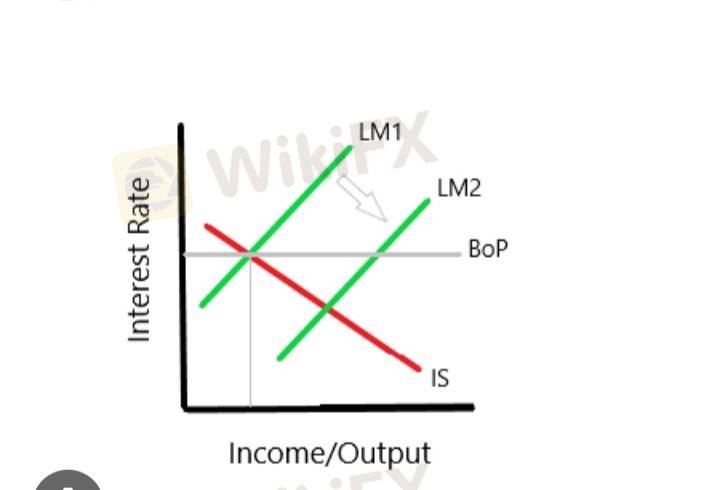
2025-02-14 20:51
業內Economic Models: Strengths and Weaknesses
#firstdealofthenewyearastylz
Economic models are simplified representations of economic systems, used to analyze and predict economic behavior. Here are some common economic models, their strengths, and weaknesses:
1. Classical Model
- *Assumptions:* Flexible prices and wages, full employment, and no government intervention.
- *Strengths:* Simple and intuitive, assumes efficient markets.
- *Weaknesses:* Ignores market failures, doesn't account for unemployment.
2. Keynesian Model
- *Assumptions:* Sticky prices and wages, government intervention, and aggregate demand drives economic activity.
- *Strengths:* Explains economic fluctuations, emphasizes role of government.
- *Weaknesses:* Overly relies on government intervention, neglects supply-side factors.
3. Monetarist Model
- *Assumptions:* Money supply drives economic activity, and markets are efficient.
- *Strengths:* Emphasizes role of monetary policy, simple and easy to understand.
- *Weaknesses:* Overlooks fiscal policy, neglects non-monetary factors.
4. Marxist Model
- *Assumptions:* Class struggle, exploitation, and the labor theory of value.
- *Strengths:* Highlights income inequality, emphasizes social and institutional factors.
- *Weaknesses:* Overly simplistic, neglects individual incentives and market mechanisms.
5. Neoclassical Model
- *Assumptions:* Rational behavior, efficient markets, and optimal resource allocation.
- *Strengths:* Provides microfoundations for macroeconomics, emphasizes individual incentives.
- *Weaknesses:* Overly relies on assumptions of rationality, neglects institutional and social factors.
6. Institutional Model
- *Assumptions:* Economic activity influenced by social and institutional factors.
- *Strengths:* Highlights the role of institutions, emphasizes social and cultural context.
- *Weaknesses:* Difficult to formalize, neglects individual incentives and market mechanisms.
7. Behavioral Model
- *Assumptions:* Humans exhibit bounded rationality, and psychological factors influence economic decisions.
- *Strengths:* Provides a more realistic representation of human behavior, emphasizes the role of psychology.
- *Weaknesses:* Difficult to formalize, neglects institutional and social factors.
Each economic model has its strengths and weaknesses, and economists often combine elements from multiple models to better understand complex economic phenomena.
贊 0
FX4036555298
ट्रेडर
熱門討論
業內
哎,现在明白不赌就是赢啊
行情分析
美元/加元技术面
技術指標
外汇技术分析之波浪理论
業內
[活動]論交易,贏取200元話費補貼
技術指標
EZ.Fury Kite是基于趋势指标MA进行判断
技術指標
指标派是什么?
市集分類

平臺

展會

代理商

招聘

EA

業內

行情

指標
Economic Models: Strengths and Weaknesses
 香港 | 2025-02-14 20:51
香港 | 2025-02-14 20:51#firstdealofthenewyearastylz
Economic models are simplified representations of economic systems, used to analyze and predict economic behavior. Here are some common economic models, their strengths, and weaknesses:
1. Classical Model
- *Assumptions:* Flexible prices and wages, full employment, and no government intervention.
- *Strengths:* Simple and intuitive, assumes efficient markets.
- *Weaknesses:* Ignores market failures, doesn't account for unemployment.
2. Keynesian Model
- *Assumptions:* Sticky prices and wages, government intervention, and aggregate demand drives economic activity.
- *Strengths:* Explains economic fluctuations, emphasizes role of government.
- *Weaknesses:* Overly relies on government intervention, neglects supply-side factors.
3. Monetarist Model
- *Assumptions:* Money supply drives economic activity, and markets are efficient.
- *Strengths:* Emphasizes role of monetary policy, simple and easy to understand.
- *Weaknesses:* Overlooks fiscal policy, neglects non-monetary factors.
4. Marxist Model
- *Assumptions:* Class struggle, exploitation, and the labor theory of value.
- *Strengths:* Highlights income inequality, emphasizes social and institutional factors.
- *Weaknesses:* Overly simplistic, neglects individual incentives and market mechanisms.
5. Neoclassical Model
- *Assumptions:* Rational behavior, efficient markets, and optimal resource allocation.
- *Strengths:* Provides microfoundations for macroeconomics, emphasizes individual incentives.
- *Weaknesses:* Overly relies on assumptions of rationality, neglects institutional and social factors.
6. Institutional Model
- *Assumptions:* Economic activity influenced by social and institutional factors.
- *Strengths:* Highlights the role of institutions, emphasizes social and cultural context.
- *Weaknesses:* Difficult to formalize, neglects individual incentives and market mechanisms.
7. Behavioral Model
- *Assumptions:* Humans exhibit bounded rationality, and psychological factors influence economic decisions.
- *Strengths:* Provides a more realistic representation of human behavior, emphasizes the role of psychology.
- *Weaknesses:* Difficult to formalize, neglects institutional and social factors.
Each economic model has its strengths and weaknesses, and economists often combine elements from multiple models to better understand complex economic phenomena.
贊 0
我也要評論
提問
0條評論

還沒人評論,趕緊搶佔沙發

提問
還沒人評論,趕緊搶佔沙發